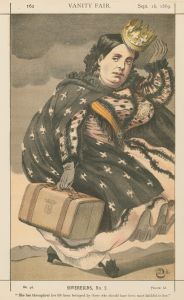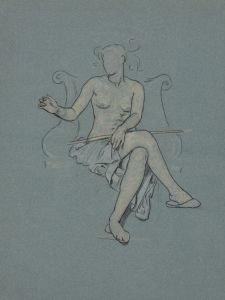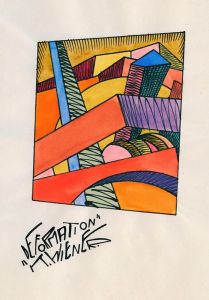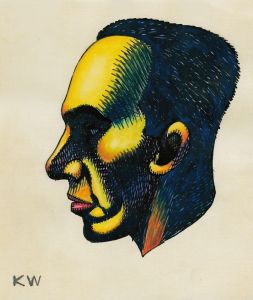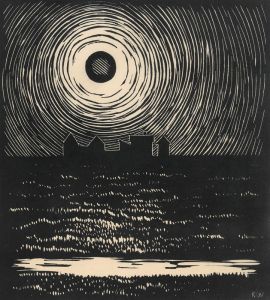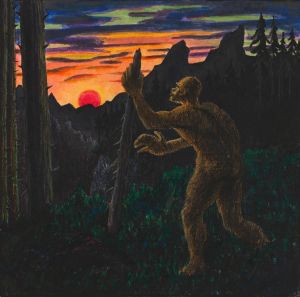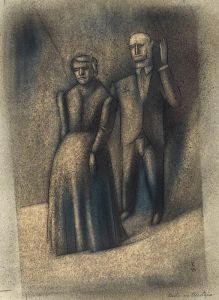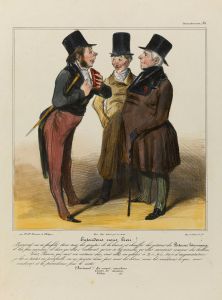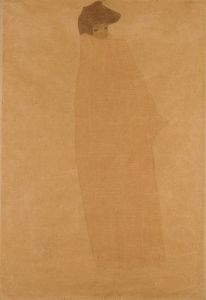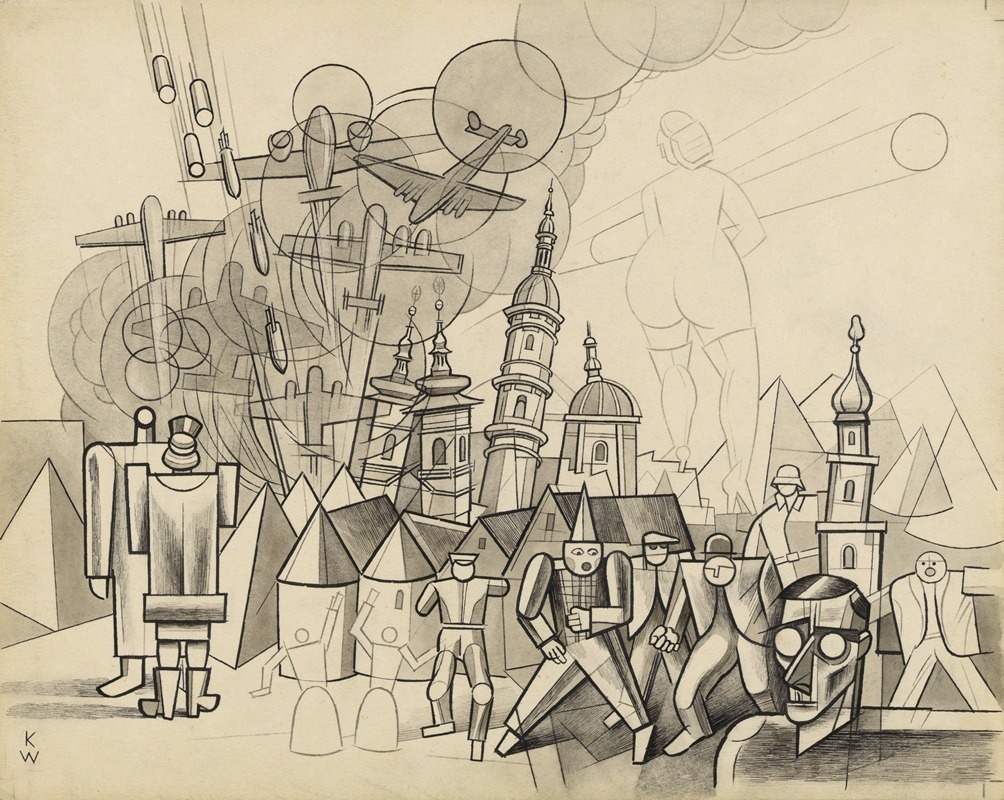
Kriegsgroteske mit Selbstbildnis
A hand-painted replica of Karl Wiener’s masterpiece Kriegsgroteske mit Selbstbildnis, meticulously crafted by professional artists to capture the true essence of the original. Each piece is created with museum-quality canvas and rare mineral pigments, carefully painted by experienced artists with delicate brushstrokes and rich, layered colors to perfectly recreate the texture of the original artwork. Unlike machine-printed reproductions, this hand-painted version brings the painting to life, infused with the artist’s emotions and skill in every stroke. Whether for personal collection or home decoration, it instantly elevates the artistic atmosphere of any space.
Karl Wiener was an Austrian artist known for his contributions to the surrealist movement, and one of his notable works is "Kriegsgroteske mit Selbstbildnis," which translates to "War Grotesque with Self-Portrait." This painting is an intriguing piece that reflects the tumultuous period in which it was created, offering insight into the artist's perspective on war and self-identity.
"Kriegsgroteske mit Selbstbildnis" is characterized by its surreal and grotesque imagery, a hallmark of Wiener's style. The painting features a self-portrait of the artist, which is integrated into a chaotic and distorted scene that evokes the horrors and absurdities of war. The use of vivid colors and exaggerated forms creates a nightmarish atmosphere, inviting viewers to explore the complex emotions and thoughts that war can evoke.
Wiener's work often delves into themes of existentialism, identity, and the human condition, and this painting is no exception. By incorporating his own likeness into the scene, Wiener not only personalizes the depiction of war but also comments on the impact of conflict on the individual psyche. The self-portrait serves as a focal point amidst the surrounding chaos, suggesting a sense of introspection and self-examination.
The historical context of "Kriegsgroteske mit Selbstbildnis" is crucial to understanding its significance. Created during a time when Europe was experiencing significant political and social upheaval, the painting reflects the widespread disillusionment and anxiety of the era. The grotesque elements in the work can be seen as a critique of the senselessness and brutality of war, a common theme among artists who lived through the World Wars.
Karl Wiener's artistic approach is often compared to that of other surrealists, such as Salvador Dalí and Max Ernst, who similarly used dreamlike and fantastical imagery to explore deeper philosophical questions. However, Wiener's work is distinct in its focus on the grotesque and its ability to convey a sense of unease and discomfort. This painting, in particular, exemplifies his skill in merging personal narrative with broader social commentary.
"Kriegsgroteske mit Selbstbildnis" remains an important work in Wiener's oeuvre, showcasing his ability to blend personal and political themes through the medium of surrealism. The painting invites viewers to reflect on the nature of war and its impact on the human spirit, encouraging a deeper understanding of the complexities of identity and existence in times of conflict.
While specific details about the painting's provenance and exhibition history may be limited, its enduring impact lies in its powerful imagery and the universal themes it addresses. As with many works of art from this period, "Kriegsgroteske mit Selbstbildnis" continues to resonate with audiences, offering a poignant reminder of the enduring human struggle to find meaning in a world often marked by chaos and destruction.





